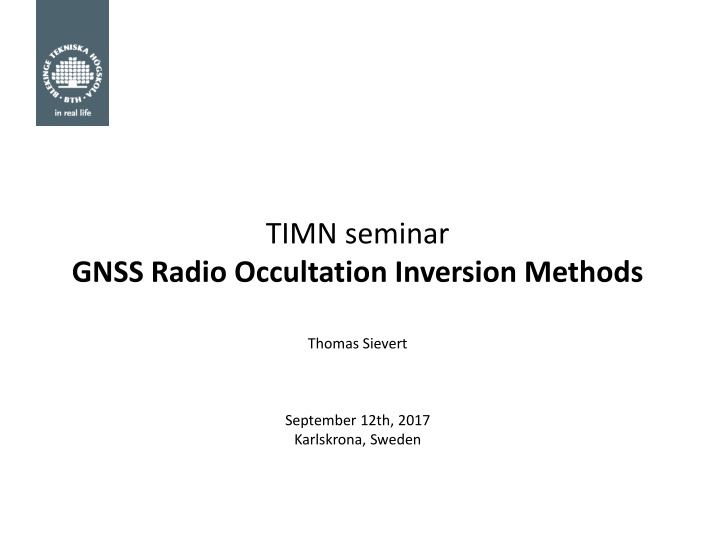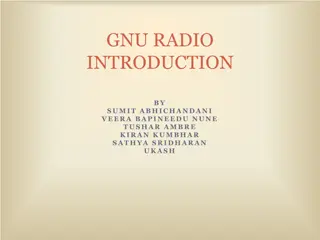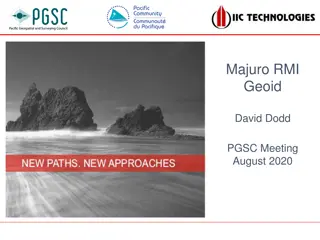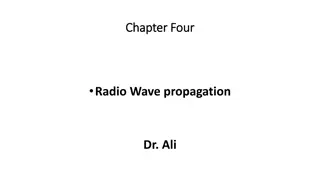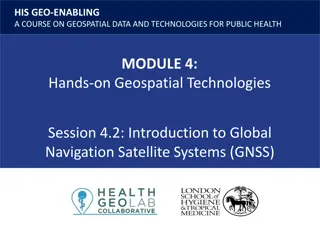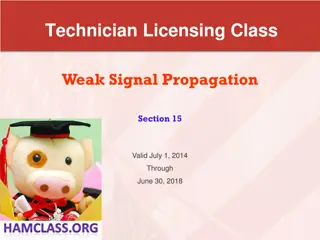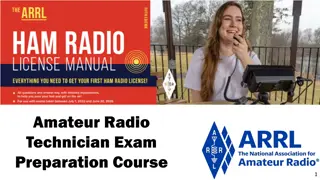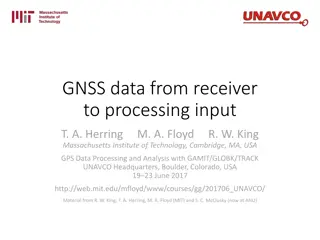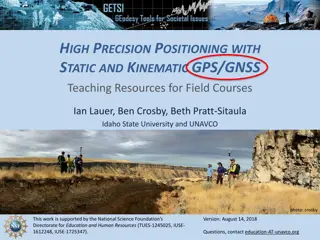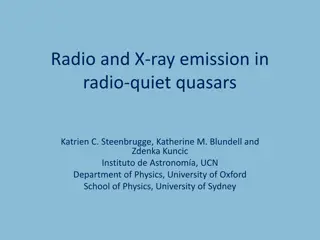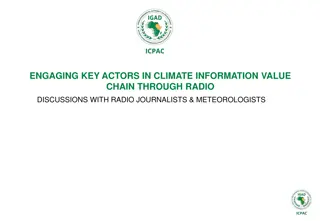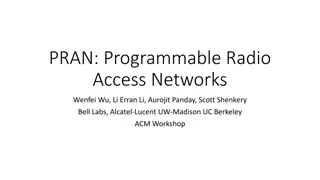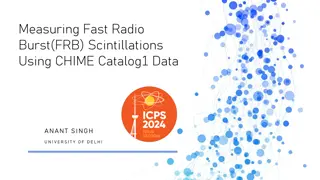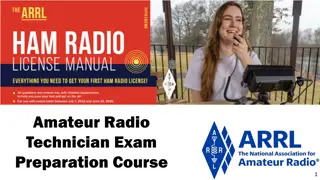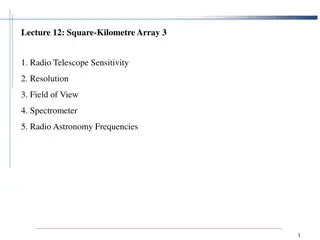GNSS Radio Occultation Methods Overview: Concepts, Features, Applications
Uncover insights into GNSS Radio Occultation methods with a comprehensive overview of concepts, features, and practical applications. Delve into the Geometry, Abel Transform, and the Phase Matching Operator utilized in this innovative technology. Explore the origins, benefits, and potential of GNSS Radio Occultation for atmospheric studies and severe weather forecasting.
Download Presentation

Please find below an Image/Link to download the presentation.
The content on the website is provided AS IS for your information and personal use only. It may not be sold, licensed, or shared on other websites without obtaining consent from the author.If you encounter any issues during the download, it is possible that the publisher has removed the file from their server.
You are allowed to download the files provided on this website for personal or commercial use, subject to the condition that they are used lawfully. All files are the property of their respective owners.
The content on the website is provided AS IS for your information and personal use only. It may not be sold, licensed, or shared on other websites without obtaining consent from the author.
E N D
Presentation Transcript
TIMN seminar GNSS Radio Occultation Inversion Methods Thomas Sievert September 12th, 2017 Karlskrona, Sweden
Outline GNSS radio occultation Concepts Features and applications Geometry Abel transform The phase matching operator Overview Limitations My project 2
GNSS Radio Occultation: Concept Origin: Scanning planets atmospheres Sensing the Earth 80 s: GPS and GLONASS Source: GNSS satellite Bending: signal refracts in the atmosphere Receiving: LEO satellite Occultation event: Source: Wikipedia 3
GNSS Radio Occultation: Features and Applications Pressure Temperature Doppler shift Bending Angle Refractivity Humidity Electron Density 4
GNSS Radio Occultation: Features and Applications High precision and vertical resolution Resolve small structures Low sensitivity to clouds or precipitation Potential of global coverage Oceans Polar zones Assimilation of RO data in Numerical Weather Prediction (NWP) TOP 5 techniques in forecast error reduction (source: ECMWF) Severe Weather Forecasting Tornado, typhoons 5
GNSS Radio Occultation: Geometry Snell s law defines a constant impact parameter (?) for any ray that passes through a spherically symmetrical volume of gas: ? = ? ? ?sin Where ?(?) is the refractive index at height ?. This lets us define an electromagnetic ray by its impact parameter. ? Each ray as a corresponding bending angle (?) how much it bends as it passes through the atmosphere. ? An occultation event can be described by a bending angle profile ?(?). 6
GNSS Radio Occultation: The Abel transform The Abel transform transforms a refractivity profile ?(?) to its corresponding bending angle profile ?(?): 1 ?? ?? 1 ? ? = 2? ?2 ?2??, ? ? where ? = ??(?). Likewise, the inverse Abel transform can transform a bending angle profile to a corresponding refractivity profile: 1 ? ?1 ? ? ?? 2 ?2 ?1 ? ?1 = ? ?1= , ?1 ?(?1), And with that, we get our refractivity profile. 7
GNSS Radio Occultation: The phase matching operator However, the instrument in orbit receives a complex signal ?(?) that we have to transform to bending angle. The phase matching operator is a Fourier integral operator, and transforms ?(?) to impact parameter space: ???? ?(?)? ??0?(?,?)??, ? ? = ???? where k_0 is the wave number of the received signal and S(t,a) is the optical path length of a test ray path. The bending angle is proportional to the phase of ?(?): ? ? = 1 ?0 ? ? ??. 8
GNSS Radio Occultation: Overview Received signal Phase matching Inverse Abel transform Refractivity profile 9
GNSS Radio Occultation: Limitations Spherical symmetry good vertical resolution but can t resolve horizontal structures. The inverse Abel transform assumes a strictly decreasing refractivity profile. Super-refraction when a ray bends as much as the Earth s curvature it gets stuck . 10
My project Super-refraction If the refractivity gradient is too sharp, there will be infinitely many refractivity profiles that produce the same bending angle profile. The inverse Abel transform will always yield the smallest of them, resulting in a negative bias: The purpose of my project is to address this bias and hopefully remove it. 11
My project Current approach While normally we only use the phase of the phase matching output, I m interested in the amplitude. Might contain additional information about the impact parameter at Earth s surface, at the beginning of the super-refractive layer, and maybe even about horizontal gradients in the atmosphere. Such information could let us make parametric reconstructions without the inverse Abel transform. 12
My project Surface reflections GNSS signals are reflected in the ocean. Reflected signals contain additional information. Usually detected as a Doppler shift. 13
My project Surface reflections A RO signal can be represented as an electromagnetic field along a parametric orbit, ?(?), which we can write as ? ? ???(?). the amplitude is the signal to noise ratio (SNR). ?(?) the phase is the excess optical path of the signal. 14
My project Surface reflections If we subtract the excess path of a typical atmosphere, we can use the short-time Fourier transform to detect reflected components: The central part is the direct signal. The highlighted area shows the Doppler shift typical to a surface reflection. I use a different approach! 15
My project Surface reflections Phase matching gives an amplitude for each individual ray: The red box highlights the lowest direct rays in the measurement. The green box highlights reflected rays. Direct rays at that impact height would require a deeper measurement! In deeper measurements, the contribution of direct rays overlaps with the reflected ones. My current paper is about finding such reflection spikes in deep measurements to detect reflected signals. 16
